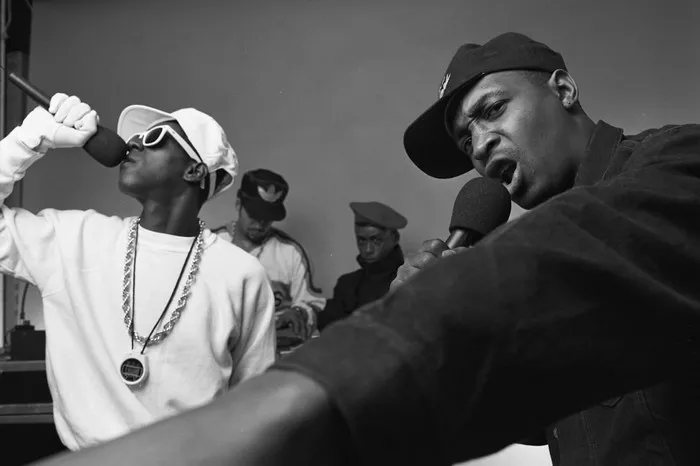In the ever-evolving landscape of hip-hop, numerous sub-genres have emerged, each with its unique characteristics and influences. One such sub-genre that has garnered significant attention in recent years is swag rap. Characterized by its emphasis on style, confidence, and materialism, swag rap has become a dominant force within the hip-hop community and has had a profound impact on both the music industry and popular culture as a whole. In this article, we will delve deep into the origins, defining features, and cultural significance of swag rap.
Origins of Swag Rap
To understand swag rap, it is essential to trace its roots back to the early 2000s when hip-hop underwent a significant shift in style and content. Emerging from the Southern United States, particularly cities like Atlanta and Houston, swag rap began to gain traction among a younger generation of artists who sought to embody a lifestyle characterized by opulence, fashion, and confidence.
One of the earliest pioneers of swag rap is widely considered to be the Atlanta-based duo, OutKast, whose flamboyant fashion sense and eclectic sound laid the groundwork for the genre. Songs like “So Fresh, So Clean” and “Rosa Parks” showcased OutKast’s unique blend of swagger and creativity, influencing a new wave of artists to embrace a similar aesthetic.
As the 2000s progressed, artists such as Lil Wayne, T.I., and Young Jeezy further popularized swag rap with their chart-topping hits and larger-than-life personas. With lyrics centered around themes of wealth, success, and self-assurance, these artists captivated audiences and propelled swag rap into the mainstream.
Defining Features of Swag Rap
At its core, swag rap is defined by its emphasis on style and confidence. Musically, swag rap often incorporates elements of trap, Southern hip-hop, and electronic music, resulting in a sound that is both infectious and energetic. Production-wise, swag rap beats are typically characterized by heavy basslines, catchy melodies, and futuristic synths, creating a backdrop for artists to showcase their charisma and bravado.
Lyrically, swag rap often revolves around themes of materialism, hedonism, and self-assurance. Artists frequently boast about their wealth, luxury possessions, and romantic conquests, painting a vivid picture of a glamorous and extravagant lifestyle. While some critics argue that this focus on material wealth promotes shallow values, proponents of swag rap argue that it serves as a form of empowerment and self-expression for artists who have overcome adversity to achieve success.
In terms of fashion, swag rap has had a significant impact on popular culture, with artists often serving as trendsetters and style icons. From designer clothing and flashy jewelry to customized accessories and extravagant hairstyles, swag rap fashion is characterized by its boldness and extravagance, reflecting the larger-than-life personas of the artists who embody it.
Cultural Significance of Swag Rap
Beyond its musical and aesthetic elements, swag rap holds significant cultural importance within the hip-hop community and beyond. For many artists and listeners, swag rap serves as a form of escapism, offering a glimpse into a world of luxury and excess that may be unattainable in reality. In this sense, swag rap functions as a form of aspirational storytelling, allowing listeners to vicariously experience the trappings of success through music.
Moreover, swag rap has played a crucial role in shaping contemporary youth culture, influencing everything from fashion trends and slang to social media behavior and consumer habits. The larger-than-life personas of swag rap artists have permeated mainstream consciousness, with their influence extending far beyond the confines of the music industry.
However, it is essential to acknowledge the criticisms that have been leveled against swag rap, particularly regarding its perceived glorification of materialism and superficiality. Critics argue that swag rap perpetuates harmful stereotypes and promotes values that prioritize material wealth over more meaningful forms of self-expression and fulfillment. Additionally, some argue that swag rap perpetuates a hypermasculine image that can be exclusionary and alienating to certain audiences.
In response to these criticisms, many artists within the swag rap scene have sought to redefine the genre and challenge conventional stereotypes. By incorporating introspective lyrics, social commentary, and diverse musical influences, these artists are pushing the boundaries of swag rap and expanding its artistic potential.
Conclusion
In conclusion, swag rap represents a vibrant and dynamic sub-genre within the hip-hop landscape, characterized by its emphasis on style, confidence, and materialism. With its roots tracing back to the early 2000s, swag rap has evolved into a dominant force within the music industry, influencing everything from fashion trends to cultural attitudes.
While swag rap has faced its share of criticism, particularly regarding its perceived glorification of materialism and superficiality, it also holds significant cultural importance as a form of aspirational storytelling and self-expression. As the genre continues to evolve, artists within the swag rap scene are challenging conventional stereotypes and pushing the boundaries of hip-hop, ensuring that its influence will be felt for years to come.

